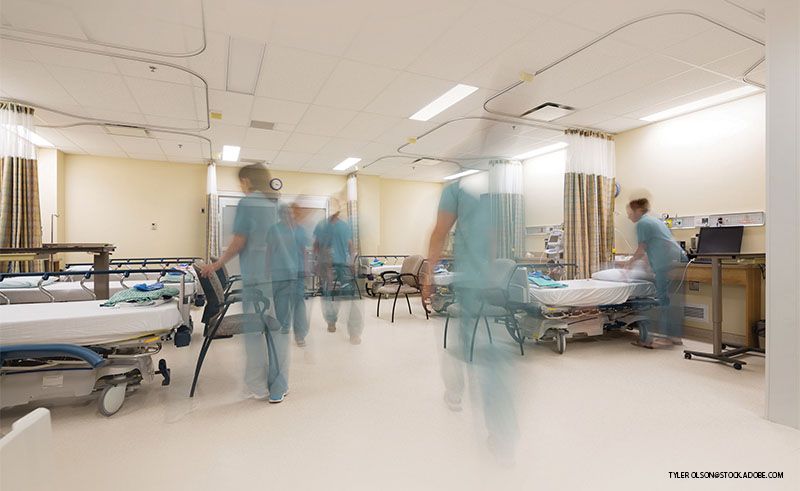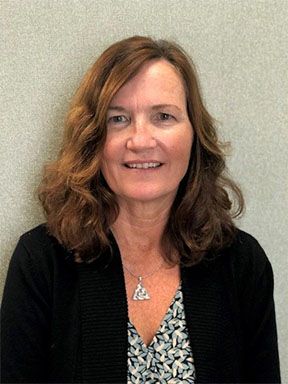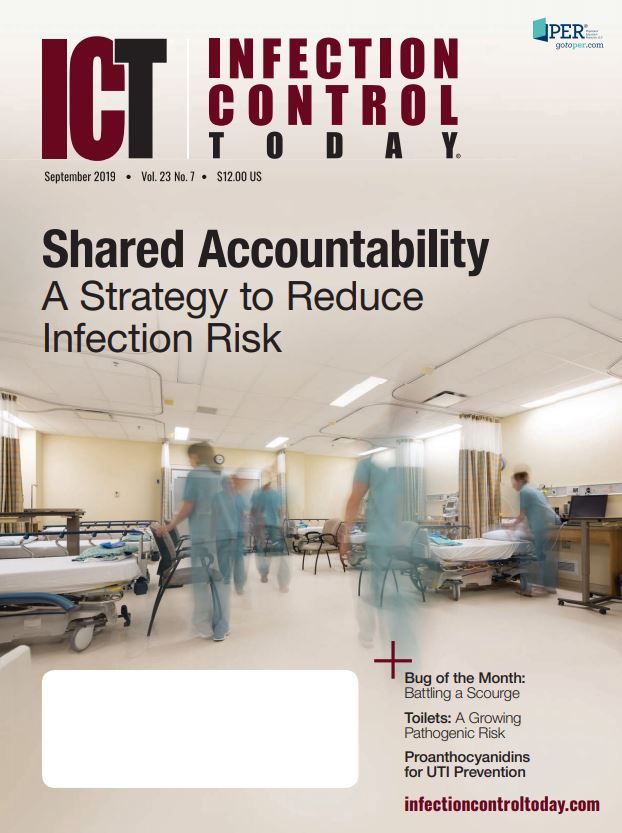Shared Accountability: A Strategy to Reduce Infection Risk

Caroline Haggerty

ICT spoke with Caroline Haggerty, RN, MSN, MBA, LSSBB, manager of quality and patient safety for Penn Medicine in West Chester, Penn., about the importance of shared accountability relating to environmental cleaning in the healthcare environment. At this year's APIC annual meeting, Haggerty was the recent presenter of a talk titled, "Who Cleans What? Improving Cleanliness of the Hospital Environment," in which she shared how her 700-bed hospital created a multidisciplinary-shared accountability model for cleaning the patient environment and equipment. Haggerty addressed the steps they undertook to ensure environments and equipment were clean, staff could speak to the cleaning process, and overall cleanliness was improved.
ICT: You shared with the audience how you developed a strategy to engage an interdisciplinary team to identify and address potential vulnerabilities in cleaning processes. What was the impetus behind this pilot project?
Haggerty: First and foremost, we wanted to provide our patients with a clean and safe environment. It was also driven by our desire to be survey-ready and compliant with regulations from the Joint Commission. We were about a year out from our survey, and we knew that the surveyors were asking frontline staff about cleaning processes, including how is equipment cleaned, who cleans it, and how do you know it was cleaned? We knew what was coming, and we wanted to be prepared for this process.
ICT: What was the level of readiness in your facility before launching the pilot study?
Haggerty: Before we conducted our study, we did not feel as though staff could speak to cleaning processes for all equipment. All the stakeholders were aware of this issue so we were definitely ready to address it. We have a unique position assigned to each nursing unit called a support associate. The support associate is charged with managing the equipment, including taking it out of the room and cleaning it. This process was being done, but how did staff know if the equipment was actually clean, and how did staff actually determine this? We also needed to ascertain who was cleaning what in the patient environment and in the unit environment. We suspected there were some gaps that needed to be addressed.
ICT: Your presentation at APIC drew a big crowd; what does that tell you about the size of the challenge for many healthcare facilities?
Haggerty: The large audience is indicative that many people are struggling with the issue of who cleans what. We shared the results of our pilot study with our local APIC chapter prior to the national meeting, and it was well received there, too, with many people wanting to adopt our program. We have seen some similar types of programs at other hospitals, but it wasn't quite to the level of ours. The grid is highly visible for all staff on a daily basis and it is very clear who is responsible for what, in terms of cleaning. A clean environment has such an impact on overall health of patients and staff, but so many institutions are struggling with exactly how to achieve it.
ICT: Did you involve infection prevention in your efforts?
Haggerty: Infection Prevention was instrumental with the success of this project from start to finish. At that time I was a performance improvement adviser at the hospital who partnered with the Infection Prevention department. Our director was one of the team leaders. The level of knowledge and expertise our Infection Prevention department has and shares, in terms of cleaning and regulatory requirements, is incredible.
ICT: You and your team designed a detailed visual grid so staff could quickly and easily identify which team members hold primary accountability for maintaining clean equipment and frequency of cleaning. Tell us more about the work behind this effort, which seemed to be key to the program's success.
Haggerty: We did so many iterations of the grid! Initially, the first edition of the grid had a column indicating who was responsible for cleaning but we felt that was not good enough. We felt people would still have questions about how a piece of equipment was supposed to be cleaned and how often it was supposed to be cleaned. That's when we came up with the idea of adding columns to the right of that first column to convey information about frequency of cleaning as well as indicate the appropriate cleaning material to use. We also color-coded columns in the grid to the colors of the scrubs worn by various hospital personnel, as an easy and fast visual cue to who cleans what. We thought that compliance could be boosted if people could simply refer to the grid to match the color of their scrubs to the kind of equipment that needed to be cleaned. The grid embraced the idea of shared accountability, a concept that we used on all of the program's material. We had people actively use the grid and provide feedback, and incorporate that feedback, and that's probably the reason why it has been so successful.
ICT: What were the objects that were falling through the cracks in terms of regular cleaning?
Haggerty: One of the pieces of equipment that was being neglected was the commodes in patient rooms. Environmental services personnel are responsible for cleaning the toilets in the bathrooms, but if a patient is using the commode it was unclear who was responsible. Typically patient care staff would clean the bucket but what about the surfaces of the commode? We identified cleaning of the seats and handles of the commode as a gap.
Now, EVS staff are responsible for cleaning the commode surfaces daily the same as they would be for cleaning the toilet. The other major challenge were the soiled linen hampers. When EVS personnel would turn over a room, they were not addressing the soiled hampers because they were kept just outside the room for easy access. These soiled linen hampers had the highest level of bioburden when we conducted our ATP testing. What surprised us was how high the level was on the hamper lids, and that was quite alarming. We also found that high-touch keyboards, which weren't washable, had significant levels of bioburden. We were concerned about that, and it took a long time for IT to agree to pilot washable keyboards at the nurses station on one of our oncology units –and it made a big difference.
The cleaning process for the keyboards, which was questionable before, now has a solid process in place. The other surprising finding was the level of contamination of our workstation on wheels and cleaning them properly was a struggle. Now each workstation has a bracket that holds the appropriate wipes for cleaning them.
ICT: What kind of training and education around cleaning did you do as part of your pilot study?
Haggerty: Educating staff was a priority. Infection prevention constantly relayed to workers the importance of cleaning and disinfecting, including dwell times. At one point we switched from a product with a three-minute dwell time to a one-minute dwell time, which helped staff turnover rooms. We also addressed the overall competency relating to cleaning of equipment. Cleaning competencies of staff responsible for cleaning, including central processing, environmental services, and nursing, were solid. What we did want to emphasize was our shared accountability model and that everyone has a responsibility for a clean patient and unit environment. We were able to accomplish this by rounded shoulder to shoulder on every unit multiple times during day and night shifts to talk about the grid, share the tool kit, talk about shared accountability and answer any questions staff had. We wanted to talk to as many individual staff members as possible.
ICT: What happened after the pilot study was completed?
Haggerty: After the initial pilot study was finished, we continued our rounds and tested random pieces of equipment. Staff did not know what we were going to be testing. We focused on the ATP testing on pieces of equipment that we thought would have the highest level of bioburden, such as the tops and handles of isolation carts. Nearly everything passed; it was rare that something failed. At the end of rounds we would debrief staff. They could not wait to hear the results of the ATP testing, knowing the results was the most important piece of the whole program to them –how did they do, and could they keep improving?
ICT: Is your program scaleable to all kinds of institutions?
Haggerty: This effort is definitely transferable to all kinds of practice settings. The University of Pennsylvania is a very large institution, but I can't say that we have a plethora of resources. The important thing is working with what you have. It is very important to work with your staff to figure out how this concept will work for them –that's the key. How is it going to work for your frontline staff? You might not have the ability to put wipes into every patient room, as it increases your use of wipes, but isn't that a good thing because it means more cleaning is being done. So, you must look at it that way. If you give staff the tools they need, where they need them, you are going to have a better outcome. Success is also about listening to staff, knowing what resources are available, and working with various stakeholders to make sure healthcare teams can do their very best –no matter the size of your institution.
The Sterile Processing Conference Survival Guide: How to Make the Most of Your Next Event
March 25th 2025From expert speakers to cutting-edge tools, sterile processing conferences, like the 2025 HSPA Annual Conference and the SoCal SPA's Spring Conference, offer unmatched opportunities to grow your skills, expand your network, and strengthen your department's infection prevention game.
Redefining Material Compatibility in Sterilization: Insights From AAMI TIR17:2024
March 24th 2025AAMI TIR17:2024 provides updated, evidence-based guidance on material compatibility with sterilization modalities. It offers essential insights for medical device design and ensures safety without compromising functionality.
The Sterile Processing Conference Survival Guide: How to Make the Most of Your Next Event
March 25th 2025From expert speakers to cutting-edge tools, sterile processing conferences, like the 2025 HSPA Annual Conference and the SoCal SPA's Spring Conference, offer unmatched opportunities to grow your skills, expand your network, and strengthen your department's infection prevention game.
Redefining Material Compatibility in Sterilization: Insights From AAMI TIR17:2024
March 24th 2025AAMI TIR17:2024 provides updated, evidence-based guidance on material compatibility with sterilization modalities. It offers essential insights for medical device design and ensures safety without compromising functionality.
2 Commerce Drive
Cranbury, NJ 08512
